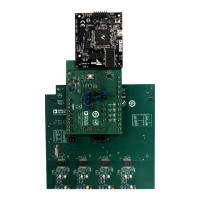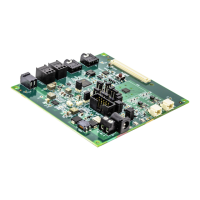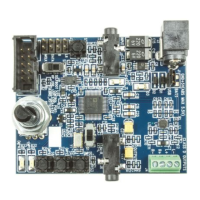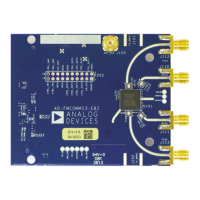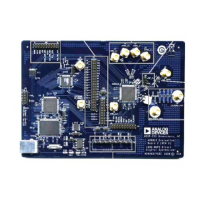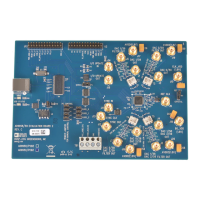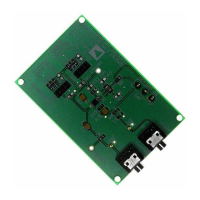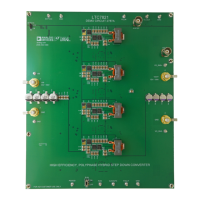EVAL-ADuCM355QSPZ Evaluation Board UG-1308
Rev. A | Page 13 of 24
APPLICATION EXAMPLES
This section describes how to use the ADuCM355 application
examples that are part of the ADuCM355 software development
kit (SDK). The ADuCM355 is a dual-die device that has a
Cortex-M3 digital die and an analog front-end (AFE) die. The
AFE die and the AD5940 are the same except for some differences
in which pins are bonded out, and both devices share a
common library interface to simplify firmware development.
The main library files in the SDK are AD5940.c and AD5940.h.
All functions in this library are compatible with the
ADuCM355, AD5940, and AD5941. All AFE related function
names begin with AD5940_. Some projects in the SDK have files
labeled AD5940Main.c, which contain the upper controllers that
control the AFE die and are mostly common between the
ADuCM355, AD5940, and AD5941.
The Cyclic Voltammetry Example section outlines how to use
the following example projects:
M355_ECSns_
CycloVoltammetry
M355_ECSns_EIS
M355_ECSns_
CappaTest
M355_ECSns_SingleWE
M355_ECSns_DualWE
M355_AfeWdt
CYCLIC VOLTAMMETRY EXAMPLE
Cyclic voltammetry is a common electrochemical measurement
in which the current on the sense electrode is measured in
response to a ramp like voltage applied on the reference electrode.
Figure 20 shows a typical, stepped differential voltage between
the reference and working electrodes of the sensor where V1 is
the initial voltage on the reference electrode and V2 is the peak
voltage on the reference electrode.
VOL
AGE
V
2
V
1
TIME
16887-015
Fig
ure 20. Typical Cyclic Voltammetry Waveform
In the ADuCM355 firmware package, the M355_ECSns_
CycloVoltammetry project demonstrates how to implement a
cyclic voltammetry measurement on the ADuCM355. There are
two main files within the project, AD5940Main.c and Ramp.c.
The AD5940Main.c file contains the upper controllers that
control the high level application parameters. The Ramp.c file
contains the low level device configuration for the cyclic
voltammetry measurement.
Figure 21 shows the AD5940RampStructInit (void) function
defined in the AD5940Main.c file. Modify the main parameters
for the signal such as ramp start voltage, ramp peak voltage,
and ramp duration for this function within this file.
16887-221
Fi
gure 21. Cyclic Voltammetry Parameters
To test the firmware, construct a dummy electrochemical cell
using 1 kΩ resistors in a star network (see Figure 22). Connect
each resistor network pin to the CE0, RE0, SE0, and DE0 pins
on the P5 header. Ensure that the configurations are constructed
as shown in Figure 22.
16887-016
Fig
ure 22. Resistor Star Network Connected to P5 Header
To begin measuring and gathering data, open a terminal program
such as RealTerm. Configure the baud rate for 230,400 bps.
Compile and build the project in the preferred IDE and load
the code onto the ADuCM355. Run the measurement, and save
the data to a .csv file for processing. If the definition of
OPT_RAMP_MEAS (parameter defined in the Ramp.h file) is
set to 1,the following four measurements are performed:
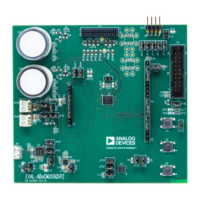
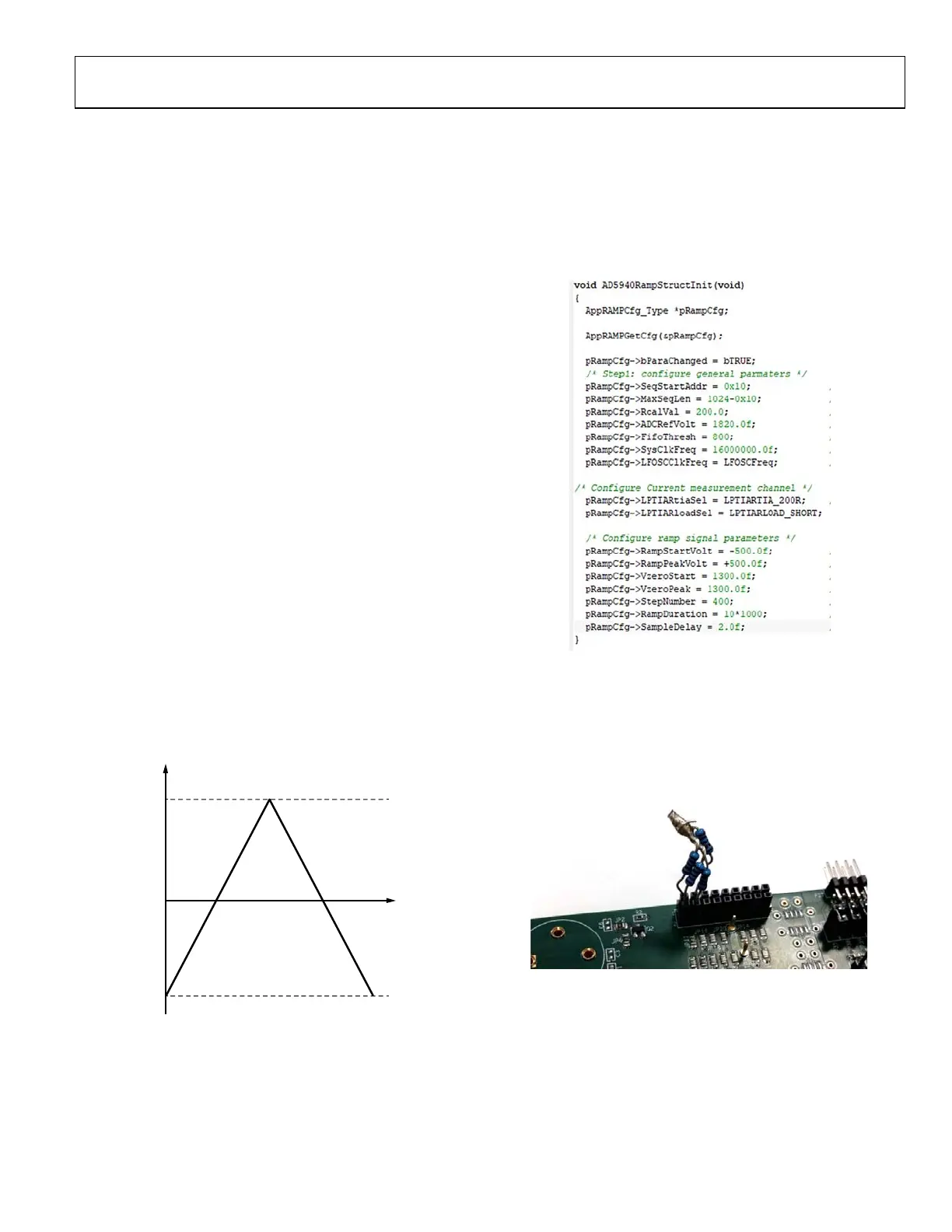